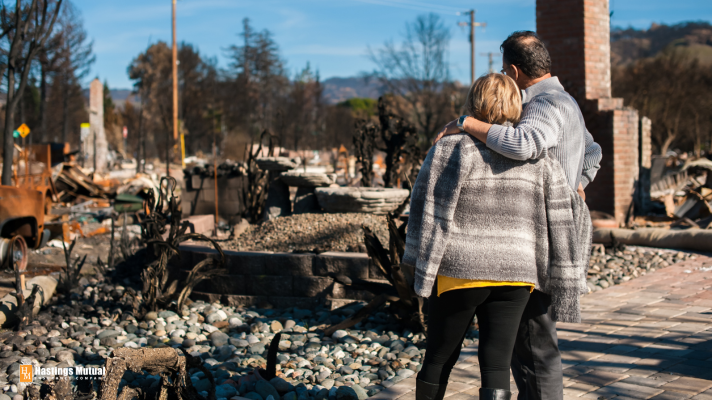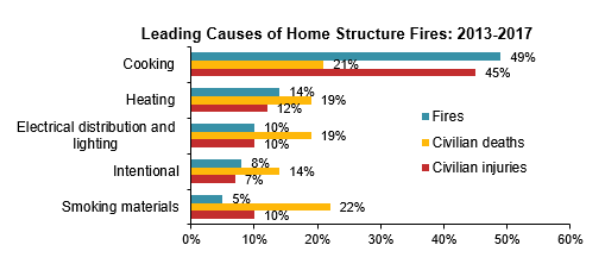A Too-Hot Time In The Kitchen
It’s always the right time to be prepared for a house fire.

The only fires most people deal with are ones well under control, in fireplaces or at a campsite. But house fires kill more than 2,500 people in the U.S. each year and cause almost $7 billion in property damage. Research finds between 2013 and 2017, nearly half of all house fires were started in a cooking incident. Other leading causes are damage from heating devices or electric lighting.
 Source
Source
What can you do to keep your house safe from fire? You’ve probably done some of these things already, but maybe it’s been a few years, and it’s time for an update.
Causes Of Fire
The leading cause of those deadly cooking fires is a lack of attention — people turning on the stove and walking away so the flames or heat can catch something flammable. Staying in the kitchen during the entire cooking time is recommended. So is keeping others (children, pets) a few feet away from a hot stove, and having nothing on top of the stove except pots and pains. Packaging and oven mitts can easily burst into flame.
When there is a fire, turn off the heat to remove fuel from the fire. Smother flames by putting a lid over the burner or a pan that is burning.
Candles, space heaters, power strips, and (less likely, but still possible) cigarettes are also easy to forget about and can quickly catch fire.
- Don’t leave candles unattended.
- Only use UL-listed space heaters with high temperature and tip off shut off features.
- Don’t overload power strips or use damaged strips.
Tools For Safety
Start with basic protection — a smoke alarm on every level of your home, in or near sleeping areas. Test smoke alarms once a month, and if they have batteries replace the batteries annually. Other alarms have a built-in battery; either way, get entirely new batteries after 10 years.
Fire extinguishers should also be inspected once a month, to make sure they’re still charged and ready for use if there’s an incident. The extinguisher’s pressure gauge should show it in the green zone, and it should be simple and quick to access and use.
Make Your Escape
Creating a fire escape plan is also simple, and in fact many of the National Fire Protection Association’s (NFPA) tools for developing an escape plan are aimed at children.
For questions or more info on how this might relate to your home insurance, contact: Mark Tarpinian, mark@tfi4insurance, 248.347.3525